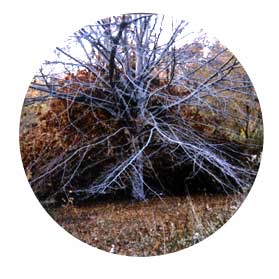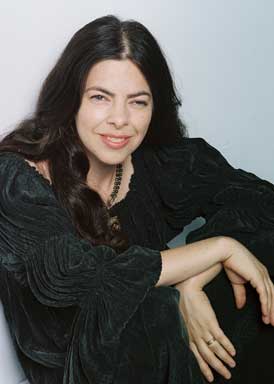About Tel Shemesh
Tel Shemesh is a web resource for those who are attempting to integrate Jewish faith and practice with earth-based beliefs and ways of living. Tel Shemesh provides writings, rituals, songs, prayers, and myths that integrate Jewish texts with earth-based images like the Divine feminine and the sacred earth, in order to promote an inclusive vision of a Judaism entwined with nature and with all life.
Tel Shemesh is committed to exploring traditional Jewish practice and to creating ritual that combines Jewish symbols and ceremonies with feminist, shamanic and nature-based insight. Tel Shemesh sponsors community rituals such as drum circles, solstice celebrations, and creative reclaimings of Jewish holidays such as Tu b’Shevat (the birthday of the trees) and Tu B’Av (the late summer grape harvest and celebration of rebirth).
Tel Shemesh seeks to be a support to earth-based Jewish communities and individuals; those who are seeking a spiritual path that balances Judaism and the spirituality of the earth, by providing web resources as well as a biweekly newsletter. For more information or to find out about programs, contact info@telshemesh.org.
From the Founder
Tel Shemesh means "hill of the sun." Tel, or hill, is a Hebrew
word for a layered mound that has artifacts of ancient civilizations
beneath it. Tel Shemesh is a place to excavate Jewish stories
and ceremonies of the natural world, as well as to create new
texts and rituals.  "Hill
of the sun" also refers to the hill in Central Park where
I conceived the name and idea for Tel Shemesh. I had spent a year
of following the cycles of earth in Jewish ways: drumming under
the full moon on Sukkot, the harvest festival; celebrating the
Sabbath by walking a sacred circle in the fields; creating a winter
solstice/Chanukah ritual to celebrate the return of the sun; dancing
with branches in a tree ritual to honor the festival of trees,
Tu B'Shevat; and using the four cups of the Passover seder to
honor the four elements. I had also spent a decade exploring the
Divine feminine in Judaism and in the natural world through poetry,
study and prayer. I had written a book of midrash, creative interpretation
of Jewish sacred texts, called Sisters at Sinai: New Tales of
Biblical Women. I had spent six years in rabbinical school learning
texts and traditions relevant to my own beliefs and practices.
Yet I felt somewhat spiritually lonely, because the traditional
Judaism I taught and practiced in community did not always have
a "port" for me to dock my new ways of being. "Hill
of the sun" also refers to the hill in Central Park where
I conceived the name and idea for Tel Shemesh. I had spent a year
of following the cycles of earth in Jewish ways: drumming under
the full moon on Sukkot, the harvest festival; celebrating the
Sabbath by walking a sacred circle in the fields; creating a winter
solstice/Chanukah ritual to celebrate the return of the sun; dancing
with branches in a tree ritual to honor the festival of trees,
Tu B'Shevat; and using the four cups of the Passover seder to
honor the four elements. I had also spent a decade exploring the
Divine feminine in Judaism and in the natural world through poetry,
study and prayer. I had written a book of midrash, creative interpretation
of Jewish sacred texts, called Sisters at Sinai: New Tales of
Biblical Women. I had spent six years in rabbinical school learning
texts and traditions relevant to my own beliefs and practices.
Yet I felt somewhat spiritually lonely, because the traditional
Judaism I taught and practiced in community did not always have
a "port" for me to dock my new ways of being.
I knew there were many people celebrating in an earth-based way in Judaism, and I even knew some of them, and I knew others were writing books about it, but there was no local community to sustain us, and no place for me to share the insights I was having or learn the insights of others. I had found poetry, music, and some teachers that helped me on my journey, but no real gathering place for it. So loved ones and friends encouraged me to create a website that would be the root system for such a community. That, along with the deep generosity of Tel Shemesh's funder, Shoshana Jedwab (whose spirit-name is Bat-Shemesh, daughter of the sun), was the origin of Tel Shemesh.
Tel Shemesh seeks to celebrate and create earth-based traditions,
rituals, and celebrations within Judaism, drawing on Jewish sources
from many time periods as well as from related earth-based traditions.
Tel Shemesh also seeks to explore multiple images of feminine
and masculine divinity, and also to explore the dialogue between
transcendence (the sacred as awesome other) and immanence (the
sacred as inner reality). Tel Shemesh uses the oneness of creation,
the duality of dialogue and conversation, the four worlds and
elements, and the cycle of the year as its underlying structures.
Tel Shemesh seeks to foster care and concern for the health and
well-being of our planet. Tel Shemesh welcomes comments as well
as submissions of rituals, articles, poetry, and Jewish sacred
text. We also accept announcements of relevant events. I hope
that, if these pages interest you, you will become part of our
community and receive our bimonthly e-mail newsletter, "Ein Shemesh/Well
of the Sun." Welcome to this hearth. I hope you will find warmth
and wisdom here.
—Rabbi Jill Hammer, Tel Shemesh Founder
About the Founder
 Rabbi
Jill Hammer, PhD, is an author, educator, midrashist, myth-weaver,
and ritualist. She is the director of Tel Shemesh, a website and
community celebrating and creating Jewish earth-based traditions,
and the co-founder of Kohenet: The
Hebrew Priestess Institute. She is the author of two books:
Sisters
at Sinai: New Tales of Biblical Women (Jewish Publication
Society, 2001) and The Jewish Book of Days (Jewish Publication
Society, forthcoming 2006). She is a poet and essayist whose work
has been published in many journals and anthologies such as Lilith,
Bridges, Response, Natural Bridge, Zeek,
The Journal of Feminist Studies in Religion,The Jewish Spectator,
Biblical Women in the Midrash, and The Women’s Torah Commentary.
Rabbi Hammer is a celebrated adult educator who has taught in
many venues including retreats, conferences, synagogues, Jewish
community centers, new moon gatherings, and on-going adult education
classes. She conducts workshops around the country on ancient
and contemporary midrash, bibliodrama, creative ritual, and Jewish
cycles of time. She is also currently serving as an adjunct at
the Academy for Jewish Religion in Riverdale, NY. Rabbi
Jill Hammer, PhD, is an author, educator, midrashist, myth-weaver,
and ritualist. She is the director of Tel Shemesh, a website and
community celebrating and creating Jewish earth-based traditions,
and the co-founder of Kohenet: The
Hebrew Priestess Institute. She is the author of two books:
Sisters
at Sinai: New Tales of Biblical Women (Jewish Publication
Society, 2001) and The Jewish Book of Days (Jewish Publication
Society, forthcoming 2006). She is a poet and essayist whose work
has been published in many journals and anthologies such as Lilith,
Bridges, Response, Natural Bridge, Zeek,
The Journal of Feminist Studies in Religion,The Jewish Spectator,
Biblical Women in the Midrash, and The Women’s Torah Commentary.
Rabbi Hammer is a celebrated adult educator who has taught in
many venues including retreats, conferences, synagogues, Jewish
community centers, new moon gatherings, and on-going adult education
classes. She conducts workshops around the country on ancient
and contemporary midrash, bibliodrama, creative ritual, and Jewish
cycles of time. She is also currently serving as an adjunct at
the Academy for Jewish Religion in Riverdale, NY.
About this Site
The Tel Shemesh site was officially launched on June 21, 2004,
the summer solstice, which is the day after the first of the month
of Tammuz. The new moon of Tammuz begins
summer in the Hebrew calendar. Every new moon represents beginnings,
and the summer solstice represents the midst of the harvest. In
Jewish legend, the first of Tammuz is a time of mourning what
has been lost. Yet it is also a time of recovery. One ancient
midrash (interpretation of a sacred story) tells that when Miriam
the prophetess died, the well that had followed her through the
desert, quenching her wandering people’s thirst, disappeared.
It was on the summer solstice that Miriam’s brother Moses
rediscovered that well, hidden inside a stone. So too, Tel Shemesh
will allow old sources of wisdom to flow, and will create new
ones as well.
Tel Shemesh thanks its dedicated web designer, Shir-Yaakov Feinstein-Feit
(sixthirteen.org), and its
generous funder, Shoshana Jedwab. Tel Shemesh also thanks the
many authors who have contributed their work to this site. May
the One who dwells within all things bless Tel Shemesh as a home
for ideas and community.
|